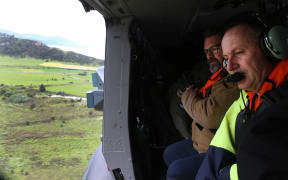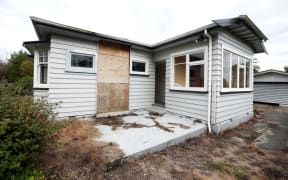A Christchurch business owner has issued a warning to anyone with property close to buildings in Kaikōura and Wellington that have been deemed unsafe because of earthquake damage.
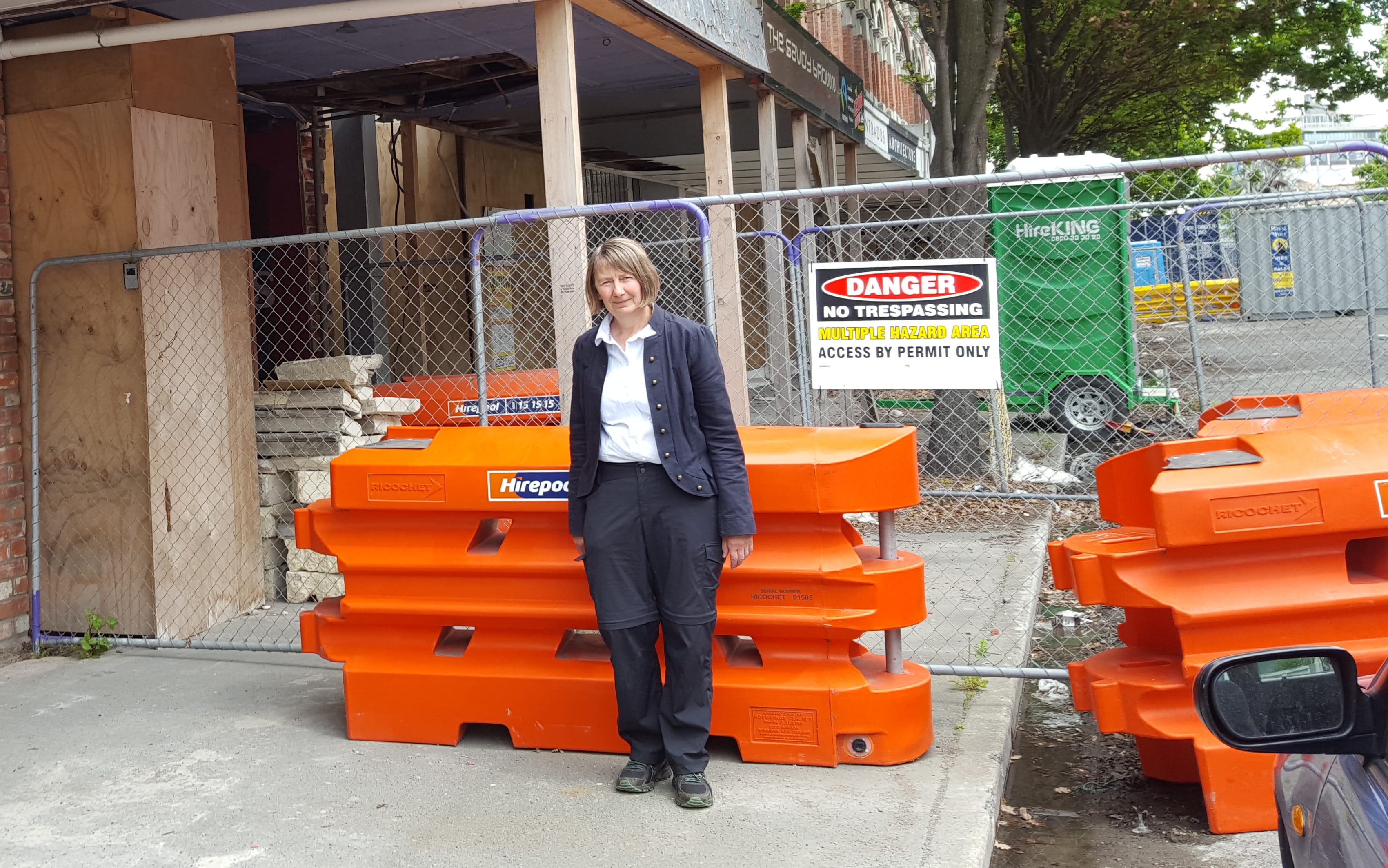
Nicky Arts outside her business in High Street in central Christchurch. Photo: RNZ / Rachel Graham
Nicky Arts says based on her experience in Christchurch, neighbours of damaged buildings should not assume they will be back operating anytime soon.
Her family have owned a brick building on High Street in central Christchurch since the late 1960s and have been operating a family printing business from there.
They had quake-strengthened their building, but that did not help when buildings alongside were damaged in the February 2011 earthquake.
Following the earthquake the Canterbury Earthquake Recovery Authority (CERA) carried out work on one of the buildings to make it safe, and put up cordon fences, but other than that they have sat untouched for over five years.
Ms Arts and her brother have been able to restart their cardmaking business but not reopen to the public.
"Its not conducive for a retail shop like we had before," said Ms Arts.
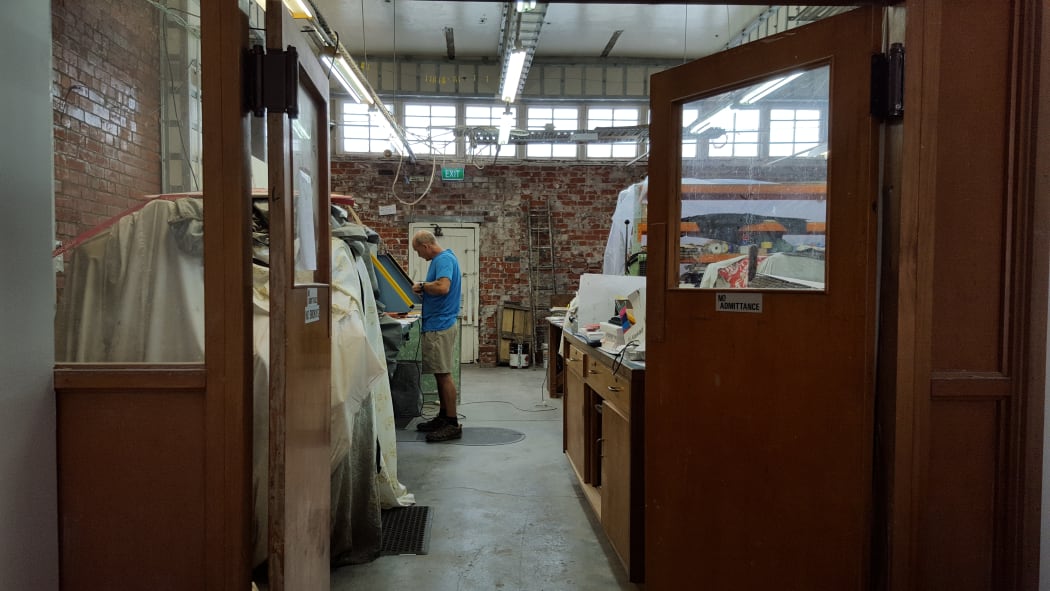
Joe Arts at work in his printing business in High Street. Photo: RNZ / Rachel Graham
"The problem is we've got no foot traffic, we've got massive fencing, we've got road cones, we're a dead end, we're the only one in the street. As a building owner in Wellington, if I'm being locked off in the same way we've (been) locked off - I would be bolting."
In 2013 and 2014 the CERA purchased some of the damaged buildings further down the street, but it too did nothing to repair or demolish the buildings before selling them earlier this year.
Ms Arts said she found it extraordinary the authorities appeared to be able to do nothing if a building owner did not take responsibility for a damaged building.
"There has to be a better mechanism for the councils or CERA to deal with a recalcitrant building owner," said Ms Arts.
"There appears to be no legislation in place forcing them to act. Six years. Is that going to happen in Wellington? There should have been a better system for deal with this issue."
Professor Ilan Noy, who specialises in the economics of disasters, said buildings were treated as though they "exist in a vacuum" and that is not the way to think of them in an urban environment.
For example, some commercial tenants in Wellington were advised that it was safe to return to their building after the 14 November earthquake, because it was undamaged, only to later find the neighbouring building was unsafe and they had to leave.
Buildings should be considered as part of a precinct where each affected the other.
"It doesn't only have to do with the Building Standards, it doesn't only have to do with the requirement according to this revised Building Act to earthquake strengthening for earthquake prone buildings. It also has to do with our emergency management processes."
Property Council chief executive Connal Townsend said the Arts' situation was extremely rare - and he was not aware of any similar situations in Wellington.
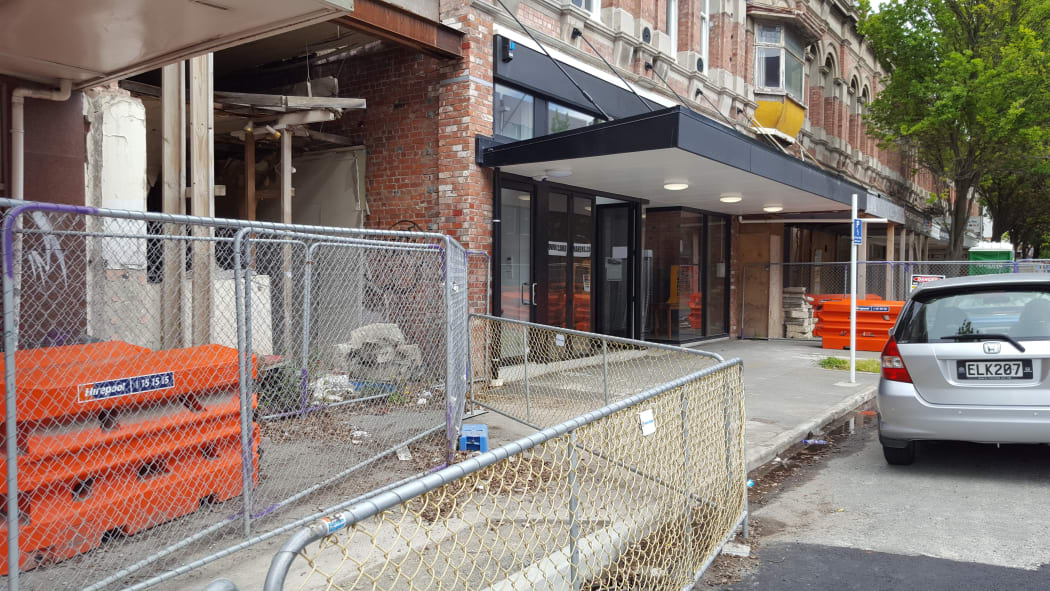
The Arts family business is surrounded on both sides by earthquake damaged buildings. Photo: RNZ / Rachel Graham
Mr Townsend said, after the earthquakes in Christchurch, the Crown had special powers to demolish buildings they considered unsafe, and the High Street buildings would have been demolished if they were dangerous.
"Now we no longer have a declared disaster, and the normal process is in place. Owners of property have an absolute common law right to enjoyment of their private property. Central government and city councils can't come in and make sweeping judgements about what people should do with their property without a right of compensation."
Director of the Greater Christchurch Group within the Department of Prime Minister and Cabinet, Kelvan Smith, said the CERA bought some buildings in High Street from willing owners in 2013 and 2014.
The buildings were adjoining and it was necessary to keep them intact so other building owners could repair their buildings where possible. This work was highly technical and would take time to carry out.
Mr Smith said because of the complex damage and the heritage facades of the buildings, detailed engineering information was needed to identify the best future options.
"CERA wanted to see the facades retained for future use if feasible to do so, as has been the case with the preservation of the McKenzie and Willis facade, which is why it took time to gather the necessary information on the best options."
Mr Smith said Christchurch City Council also has powers and functions under the Building Act 2004. It can require building owners to undertake works under section 124 of the Building Act.
The council was unavailable for comment.
Ms Arts said she understood work would start on the damaged buildings at other end of her block early next year, but that work would not include her two direct neighbours.

